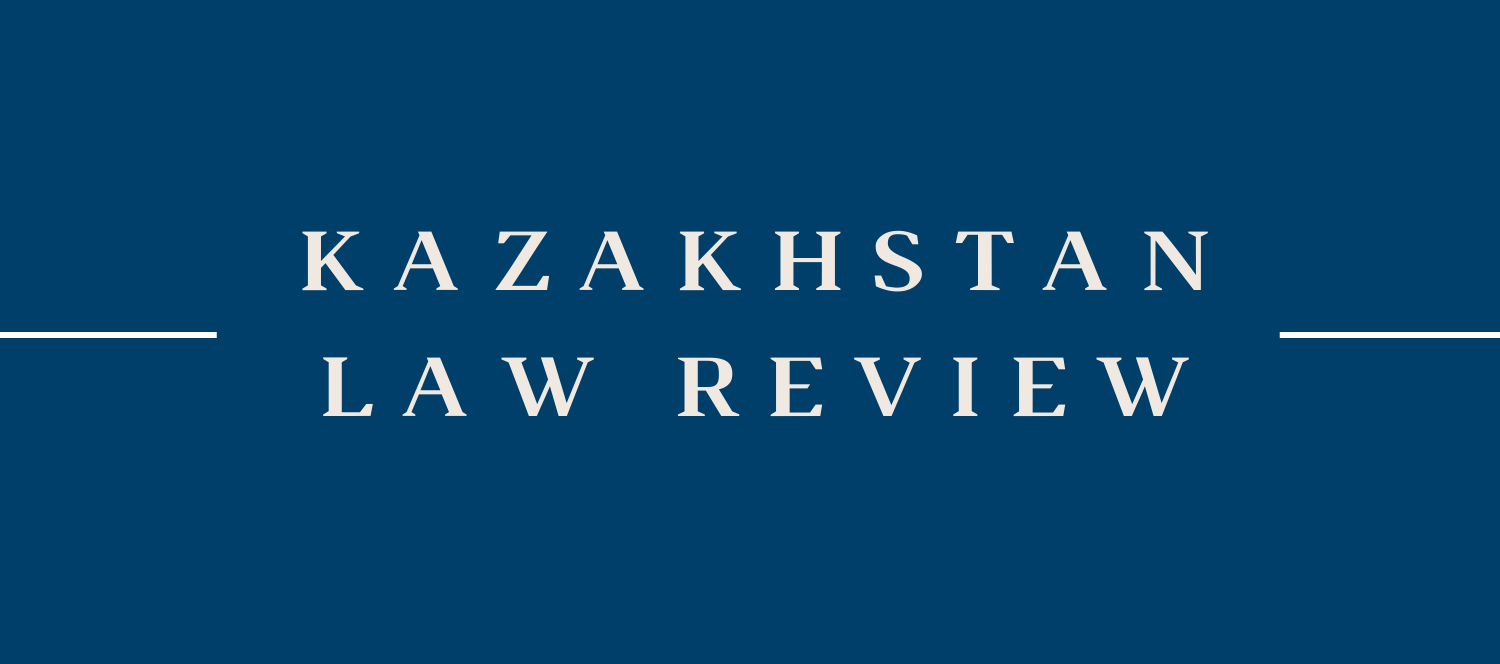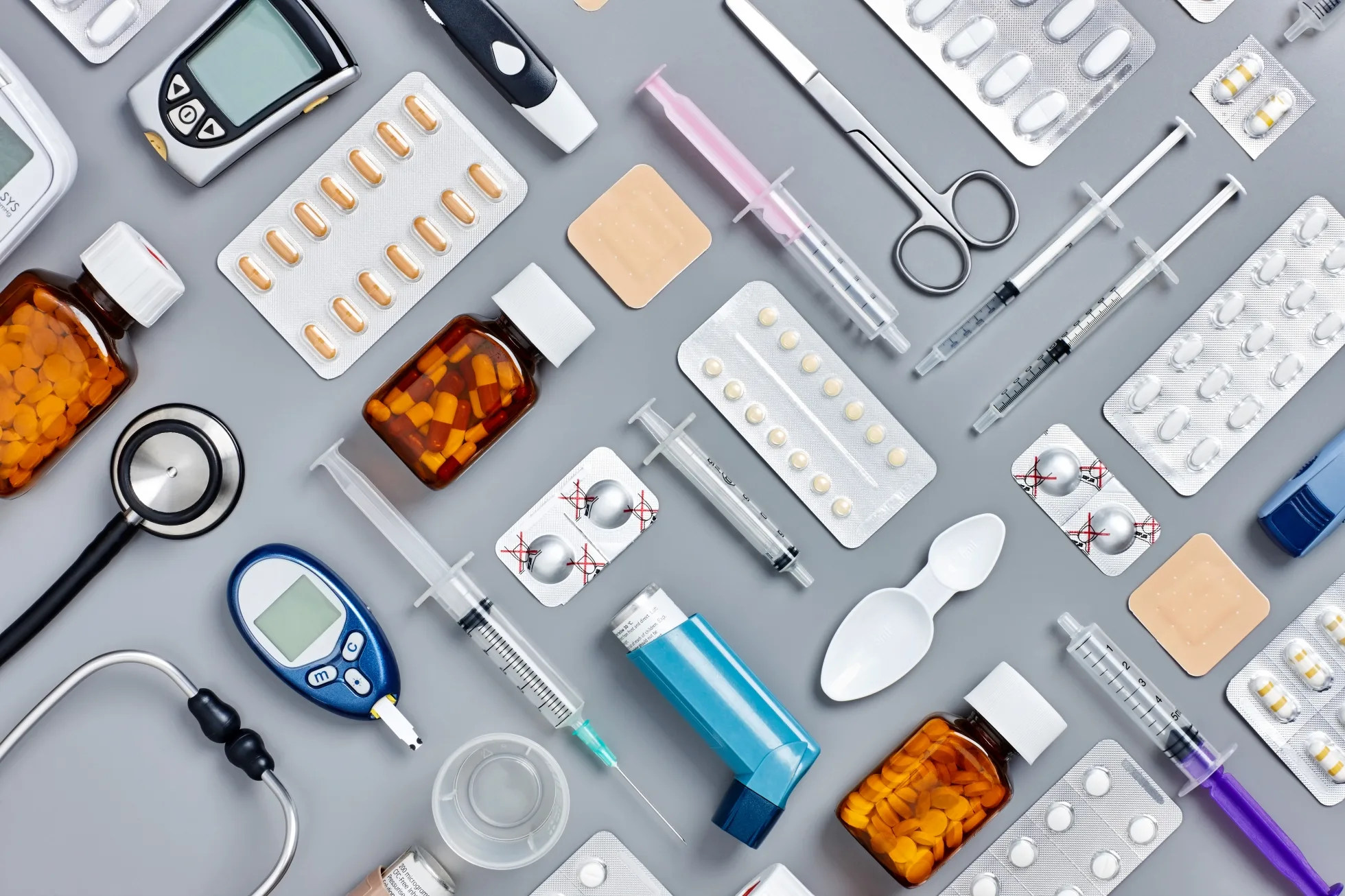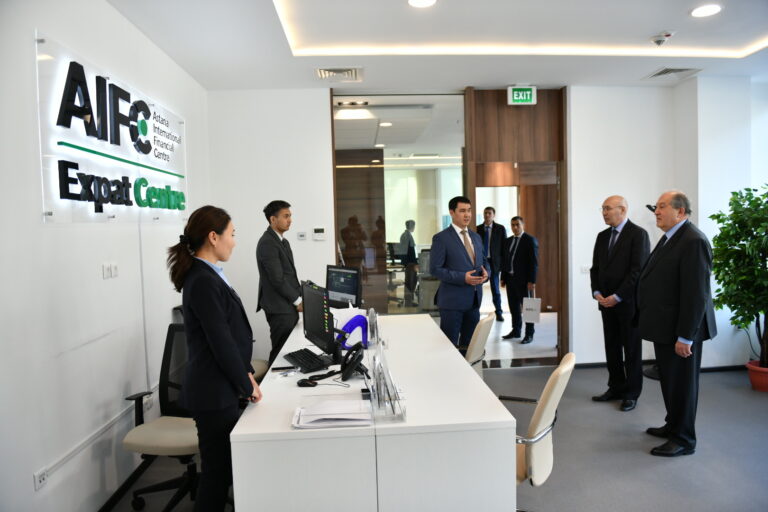Introduction
Pharmaceutical companies are consistently developing advanced products designed to diagnose and treat patients worldwide.
When a new solution is initially introduced to the market in the country of origin (following approval by the relevant regulatory authority), it often expands to other jurisdictions.
Recognizing the crucial role of diagnostic services in disease prevention, diagnosis, and treatment, as highlighted in the World Health Organization’s resolution WHA76.5 «Strengthening Diagnostics Capacity» on May 30, 2023[1], the institution of recognizing medical devices that have received approval from respected regulatory bodies, such as the FDA[2] and EMA[3], becomes increasingly important.
In the post-Soviet countries, Georgia and Uzbekistan have been of particular interest, as they introduced the institution of recognizing approved medical devices in 2009 and 2021, respectively. Meanwhile, the government of Kazakhstan, a member of the EAEU[4], has incorporated elements of the recognition concept into its medical device examination procedures. However, these amendments only marginally reduce the overall registration period for medical devices.
In this article, we will explore some distinct features of the medical device recognition processes in each of these countries individually.
Georgia
In Georgia, the commitment to adopting business-friendly practices has borne fruit, propelling the country up the World Bank’s Doing Business ranking. Georgia’s remarkable ascent in this ranking saw it move from the 24th spot in 2016 to the 7th place in 2020, with a brief stint at 6th place in 2019[5].
The establishment of the institution of recognition of medical devices in 2009 marked a significant step forward. It provided residents of Georgia with swift access to diagnostic tools. Additionally, the relatively liberal regulations in place make it rather straightforward for foreign pharmaceutical companies to import their products into the country.
Under the recognition regime, the registration process for medical devices is streamlined. It typically takes just 7 working days to complete, and the associated cost is approximately 185 US dollars[6] (or 500 Georgian lari[7]). Georgia’s recognition[8] extends to 39 countries[9] and includes the EMA as an interstate regulatory authority.
The documents required for registering a medical device under the recognition regime in Georgia include:
- A formal application.
- A device’s original instruction for use, along with a certified translation into Georgian.
- A sample of the device’s labeling, which can be either in its original form or an electronic version. The regulator has the authority to request the submission of an original sample of the labeling. In cases where the medical device has not yet been released, the regulatory authority accepts the electronic version, with the possibility of requesting the original at a later stage.
- Information regarding the duration for which a medical device has been approved for sale in a foreign market by the relevant regulatory authority.
- Information about the unique number (authorization) for the medical device’s admission to the relevant market.
- A medical device certificate issued by the relevant regulatory body. This certificate can be issued for any market under the supervision of a regulatory authority recognized by the Government of Georgia.
- If a medical device certificate is not available, an equivalent document may be provided. In the absence of a medical device certificate or an equivalent document, duly certified copies may be submitted.
When a medical device is registered under the recognition regime in Georgia, its approval period aligns with the period it’s authorized for in the market overseen by a regulatory body recognized by the Georgian government, capped at a maximum of 5 years.
The regulatory body has the authority to temporarily halt the registration of a medical device under the recognition regime in Georgia based on recommendations from the national or international body regulating medical device circulation in the country of origin. If registration is suspended for a medical device under the recognition regime, this suspension extends to all associated products.
When the registration period for a medical device under the recognition regime expires, the document certifying its right to enter the Georgian market is revoked. Nonetheless, the sale of a medical device already in circulation within Georgia is allowed until the expiration date.
If the authorized timeframe for a medical device registered under Georgia’s recognition regime expires, the registration is revoked for all product variations with their specific packaging and labeling that were granted entry into the Georgian market.
In Georgian legislation, there are provisions that allow the import of medical devices into the country without the need for state registration under either the national or recognition regime, but this applies only in exceptional circumstances. These exceptional cases include an import:
- For preclinical and clinical research.
- For registration as a sample.
- For an individual’s specific needs.
- For use in exhibitions, symposiums, conferences, forums, and congresses as samples, with no intention of selling.
- For re-export.
- For the purpose of storing goods in customs warehouses or customs terminals, and for circulation under the customs transit regime.
- As bulk products intended for local production.
- Under special conditions for humanitarian purposes, such as natural disasters, mass casualties, epidemics, rare diseases, and other instances of special public interest, subject to the approval of the Ministry of Health.
In Georgia, it is the responsibility of the state to ensure the safety, quality, and effectiveness of medical devices admitted to the local market under the recognition regime.
Uzbekistan
Uzbekistan is actively pursuing a healthcare development policy to enhance its public health sector. In addition to the introduction of a mechanism for recognizing medical devices approved by reputable foreign regulators in 2021, President Mirziyoyev approved a comprehensive healthcare sector reform roadmap in June 2023[10].
This roadmap encompasses various initiatives, including the development of a draft public health code, establishing over 600 primary healthcare centers nationwide, conducting preventive screenings for more than 13 million people to detect various diseases, training healthcare professionals, and introducing new diagnostic and treatment methods.
Regarding the recognition procedure, it’s essential to note that it differs somewhat from the procedure established in Georgia.
In Uzbekistan, the registration period for medical devices under the recognition regime is 15 working days, and the associated cost depends on various factors, usually being calculated on a case-by-case basis. Only medical devices approved by a limited number of regulatory bodies are eligible for recognition in Uzbekistan[11].
The documents required for registering a medical device under the recognition regime in Uzbekistan include:
- A formal application.
- Samples of the medical device.
- General information about the medical device.
- A copy of the registration certificate of the medical device in its country of manufacture.
- A regulatory document outlining the testing procedures and methods for the medical device, along with an international, interstate, or national product standard.
- Device’s passport and instruction for use in both Uzbek and Russian.
- Protocols from laboratory tests, technical tests, measurements of medical device instruments, and preclinical and clinical research.
- Information confirming compliance with international standards for the manufacture conditions of the medical device (if applicable).
- A confirmation of the absence of infectious agents in in vitro diagnostic products prepared from biological materials.
- Information about the storage stability of the medical devices.
- Illustrated advertising materials, brochures, catalogs, and photos measuring at least 13 x 18 cm.
- Color graphic layouts for both primary and secondary packaging.
- Additional information regarding the quality, effectiveness, and safety of the medical device.
- A duly executed power of attorney if the registration is being done through a representative.
When seeking an extension of the certification period for a medical device in Uzbekistan, it’s important to provide evaluations from clinics within Uzbekistan regarding the medical device’s effectiveness and safety.
However, there are several grounds on which the issuance of a certificate may be refused:
- An incomplete submission of the necessary documents, medical device samples, and other required materials by the applicant.
- A non-compliance of the applicant with permitting requirements and conditions.
- A presence of false or distorted information in the documents submitted by the applicant.
- A receiving a substantiated negative evaluation based on the examination of registration documents for medical devices that assess their quality, safety, and effectiveness.
- A violation of intellectual property rights concerning medical devices.
The regulatory authority cannot reject the issuance of a registration certificate based on reasons not outlined in the Regulation for the procedure of state registration of medicines, medical devices, medical equipment, and the issuance of a registration certificate[12].
When the regulatory authority decides to refuse the issuance of a registration certificate, it must provide written notification, including electronic communication through the information system. The notification should specify the grounds for refusal, cite specific legal provisions, and define a timeframe within which the applicant must address the identified issues and resubmit the documents for reconsideration. The Regulations set a minimum period of at least 10 working days for the applicant to rectify the reasons for refusal.
If the applicant addresses the identified issues within the stipulated timeframe, the regulator will review the documents within 10 working days, and there is no additional fee for this re-examination.
If addressing the reasons for refusal involves making changes to the medical device that impact its quality, effectiveness, or safety, the application is treated as a resubmission, and the regulatory authority will evaluate it using the standard procedures.
During the reconsideration process, the regulatory body is not permitted to introduce new grounds for refusal that were not communicated to the applicant previously.
If the applicant submits the application after the deadline mentioned in the refusal notice, it is considered as a new submission and is evaluated by the regulatory authority based on standard criteria.
Applicants hold the right to appeal both the refusal to issue a registration certificate and the actions (or inaction) of the regulatory body.
Once the registration certificate has expired, the sale and usage of a medical device in medical practice are permitted, provided that the device was manufactured during the period of validity specified in its certificate.
Kazakhstan
The EAEU regulations initially stipulated a transition period for all member states to adopt a common procedure for registering medical devices. Originally, this transition was set for January 1, 2023. However, this date was subsequently extended to January 1, 2026. This means that until the end of 2025, all EAEU members, including Armenia, Belarus, Kazakhstan, Kyrgyzstan, and Russia, are allowed to apply their own regulations for the registration of medical devices[13].
As per the current regulations for conducting medical device examinations in Kazakhstan[14], the maximum examination period should not exceed 90 calendar days for medical devices classified as classes I and IIa. For products falling under classes IIb and III, the examination period should not exceed 100 working days.
In practice, the examination period for medical devices can extend to six months or more. This prolonged process is typically associated with requests from the regulatory authority during the examination.
It’s important to note that the examination period does not include time spent on:
- Addressing any deficiencies in the registration dossier.
- The time taken by the applicant to provide documents and materials upon request during the examination.
- Preparing and inspecting the medical device[15].
- Approval of the final documents by the applicant.
- Organizing and conducting the Expert Council’s review.
Medical device inspection involves ensuring the production site complies with necessary requirements and can last up to 120 calendar days. This inspection also applies to foreign production sites, which can be conducted through video communication in cases of emergencies or other force majeure circumstances.
The Expert Council is a collective body within the regulatory authority responsible for addressing contentious matters arising from examination results. It assesses the grounds for issuing negative conclusions regarding the safety, quality, and effectiveness of medical devices and makes final decisions. Expert Council meetings are convened monthly.
When it comes to recognizing foreign medical devices, the scope is limited to the fact that the Rules for the Examination of Medical Devices permit the omission of laboratory tests for medical devices produced in the European Union, Great Britain, the USA, Canada, Japan, and Switzerland, which have been authorized for circulation by the regulatory authorities in these countries.
Laboratory tests are also waived if there is documentation from a notified body confirming full compliance of the medical device manufacture and product quality control system with the European Commission’s Medical Devices Directives.
Laboratory tests for medical devices can extend up to 30 calendar days for devices falling under classes I and IIa, while for devices categorized as classes IIb and III, this period may be up to 60 calendar days. This means that the overall examination duration can be reduced by this timeframe, although it might not be considered a significant relaxation of the rules.
The examination cost for in vitro diagnostic medical devices varies depending on the number of items, typically ranging from approximately 200 to 350 US dollars (around 100,000 to 170,000 Kazakhstani tenge[16]).
In the event of a positive examination outcome for a medical device, an additional application for its registration must be submitted[17]. The registration process takes 5 working days, with an additional cost of approximately 80 US dollars.
Challenges
Despite the commitment of the governments of Georgia and Uzbekistan to streamline the regulations surrounding medical device registration, certain challenges still persist in the recognition procedures.
In Georgia, the Regulatory Agency for Medical and Pharmaceutical Activities mandates the submission of original instructions for medical devices, requiring a physical manufacturer’s stamp on a paper copy of the instructions for use. Electronic submission of a complete document package, even when electronically certified, is not currently accepted.
Conversely, in Uzbekistan, local regulations do not necessitate the provision of original instructions for use certified by the manufacturer’s stamp. However, they do impose other restrictions.
Although the recognition regime typically does not include laboratory testing when registering medical devices, the current rules in Uzbekistan obligate the Center for the Safety of Pharmaceutical Products to request samples of medical devices when processing recognition applications. This approach results in additional costs for manufacturers and distributors.
Another obstacle in the recognition process is that it cannot be applied to medical devices of the lowest risk class (the safest category). These products typically have a declaration of conformity, a document issued directly by the manufacturer, to confirm their compliance with European regulations.
In the case of medical devices approved for use in the European Union, Uzbekistan’s current rules only allow recognition for those devices for which the European regulator has issued a certificate of conformity. This document, with some exceptions, is typically issued for medical devices classified as II and III (medium and high-risk classes). In contrast, for medical devices of class I (low risk), the manufacturer independently issues a declaration of conformity[18].
Interestingly, medical devices of medium and high-risk classes can be registered in Uzbekistan under the recognition regime within 15 working days, while the safest low-risk devices must go through the national regime, which in practice can take several months to several years.
It’s important to note that Georgia’s legislation, unlike Uzbekistan’s, permits the registration of medical devices under the recognition regime if they possess either a certificate of conformity or an equivalent document, such as a declaration of conformity[19].
In Kazakhstan, the procedures for the examination and registration of medical devices, unlike countries with full recognition regimes, require careful examination and need, probably, simplification. The main challenge in Kazakhstan’s liberalization of procedures is its membership in the EAEU and its obligation to adhere to union law.
***
In conclusion, despite the challenges described in the application of medical device recognition procedures in Georgia and Uzbekistan, both governments are actively working towards adopting more lenient regulations for medical device registration, aligning with contemporary international standards.
Furthermore, considering Kazakhstan’s potential to apply national procedures for medical devices examination and registration until the end of 2025, it appears prudent to consider a comprehensive liberalization of the existing rules, incorporating elements of medical device recognition during 2024-2025. Such a move could potentially have a positive impact on broadening access to modern diagnostic and treatment capabilities for the population.
Head of Healthcare Policy & Access at Roche Diagnostics Central Asia & Caucasus,
Shynggys Temir, LLM,
Healthcare Policy & Access Manager at Roche Diagnostics Central Asia & Caucasus
[1] https://apps.who.int/gb/ebwha/pdf_files/WHA76/A76_R5-en.pdf
[2] U.S. Food and Drug Administration
[3] European Medicines Agency
[4] Eurasian Economic Union
[5] https://www.worldbank.org/en/news/press-release/2019/10/24/georgia-ranks-7th-in-the-world-for-ease-of-doing-business-says-latest-world-bank-study
[6] According to the exchange rate, 1 US dollar equals 2.7 Georgian lari
[7] Art. 7(6)(a) of the Law of Georgia on Registration Fees of 10 April 2002
https://matsne.gov.ge/ka/document/view/16054?publication=44
[8] Resolution of the Government of Georgia on determining the list of state bodies regulating pharmaceutical products in other countries of 22 October 2009
https://matsne.gov.ge/ka/document/view/4606?publication=0
[9] USA, Australia, Austria, New Zealand, Belgium, Bulgaria, Germany, Denmark, UK, Estonia, Spain, Ireland, Italy, Japan, Iceland, Canada, Cyprus, South Korea, Luxembourg, Latvia, Lithuania, Malta, Norway, Netherlands, Portugal, Poland, Romania, France, Greece, Slovenia, Slovakia, Hungary, Finland, Sweden, Switzerland, Czech Republic, Turkey, Croatia, Israel
[10] Appendix No. 5 to the Resolution of the President of the Republic of Uzbekistan on measures for the efficient organization of public administration in the healthcare sector within the context of administrative reforms of 20 June 2023
https://lex.uz/ru/docs/6507882#6508652
[11] USA, Japan, South Korea, UK, EU (EMA)
[12] Clause 11 of the Regulation for the procedure of state registration of medicines, medical devices, medical equipment, and the issuance of a registration certificate of 23 March 2018
https://lex.uz/docs/3594815#3596488
[13] https://eec.eaeunion.org/news/prodlena-vozmozhnost-registratsii-meditsinskikh-izdeliy-po-natsionalnym-pravilam/
[14] Chapter 6 of the Regulation for medical device examinations of 27 January 2021 https://adilet.zan.kz/rus/docs/V2100022144#z1493
[15] Regulation for medical device inspections of 23 December 2020
https://adilet.zan.kz/rus/docs/V2000021898
[16] According to the exchange rate, 1 US dollar equals 477 Kazakhstani tenge
[17] Regulation for state registration, re-registration of a medicine or medical device, amendments to the registration dossier of a medicine or medical device of 9 February 2021
https://adilet.zan.kz/rus/docs/V2100022175#z16
[18] Art. 52(7) of the Regulation (EU) 2017/745 of the European Parliament and of the Council of 5 April 2017
https://eur-lex.europa.eu/legal-content/EN/TXT/?uri=CELEX%3A32017R0745
[19] Art. 117(5)(f) of the Law of Georgia on Medicines and Pharmaceutical Activities of 17 April 1997
https://matsne.gov.ge/ka/document/view/29836?publication=29
Следите за свежими материалами, подписывайтесь здесь: Telegram, Instagram, Facebook, YouTube




